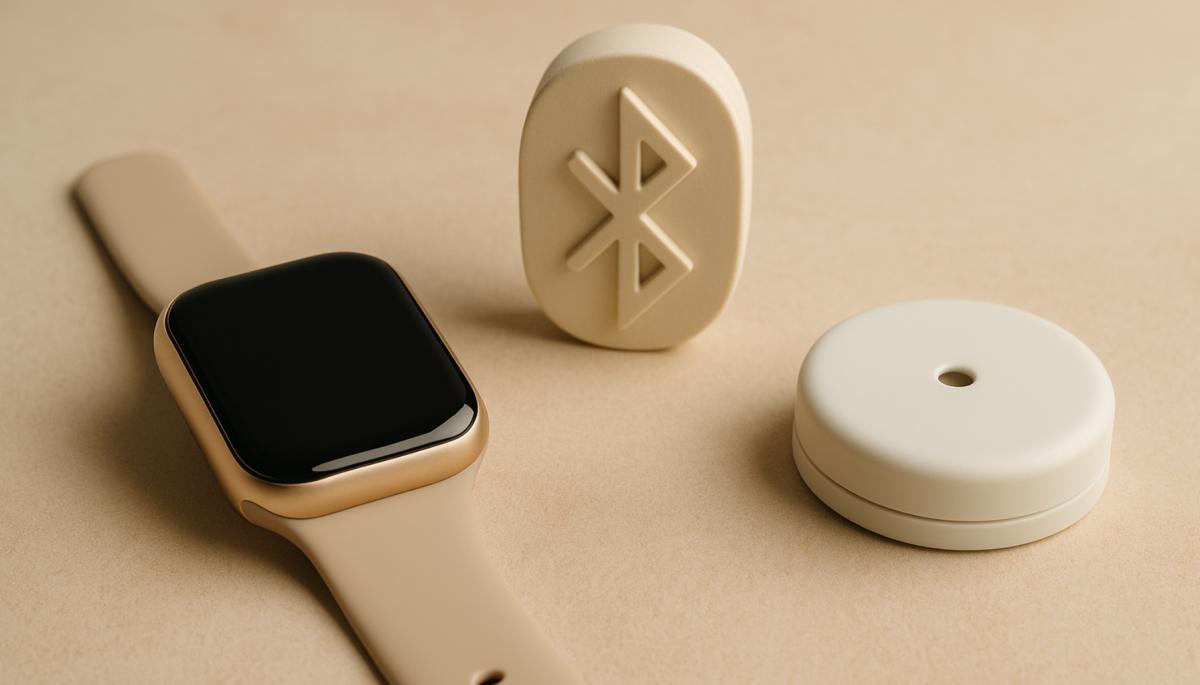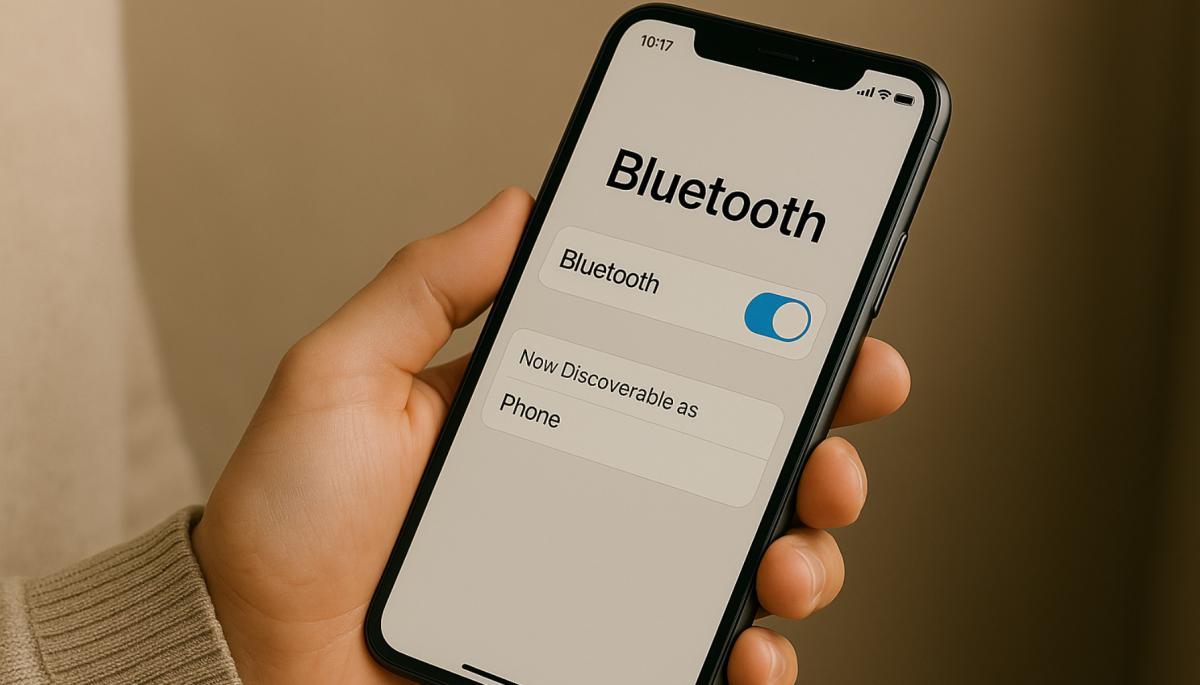Bluetooth 5.3 brought improvements for IoT devices like smartwatches and sensors. It offers lower latency, higher energy efficiency, and better connection stability. However, it's not the only one, with its close relative Bluetooth 5.4 and the upcoming Bluetooth 6.0. Join us as we explore how it differs from previous versions and what to expect in the future.

Bluetooth is a technology that has become an indispensable part of our daily lives over the past two decades. Each new version brings improvements that further advance its capabilities. In 2021, the Bluetooth SIG (Special Interest Group) introduced Bluetooth 5.3. What does it bring and how does it differ from its predecessors?
What is Bluetooth 5.3?
Bluetooth 5.3 is one of the latest iterations of Bluetooth wireless technology, building on the foundations of previous versions, especially Bluetooth 5.0, 5.1, and 5.2. This version focuses on improving connection efficiency, reliability, and performance, particularly for low-power devices such as wearables, smart sensors, or Internet of Things (IoT) devices.
While at first glance the changes might seem more evolutionary than revolutionary, they bring significant improvements for specific use scenarios. For example, it improves connection management, reduces latency, and increases energy efficiency. Additionally, it introduces features that make it easier for developers to create more advanced applications.
What new features did Bluetooth 5.3 introduce?
Bluetooth 5.3 brought improvements that made wireless communication more efficient, stable, and secure, particularly for low-power devices such as smartwatches, smart home sensors, and fitness trackers.
Optimized advertising packets
One of the key improvements was the optimization of broadcasting periodic advertising packets. This allows devices to skip unnecessary data, saving energy and extending battery life. This is useful, for instance, for smartwatches, which can remain charged for longer.
Quick mode switching and better channel selection
Another feature was the ability to quickly switch between low-power and performance modes. For example, headphones can save energy at rest but switch to full performance immediately during an incoming call to ensure a smooth, delay-free conversation.
Bluetooth 5.3 allows devices to assess the quality of communication channels. This enables them to choose the least interfered ones, ensuring a more stable connection even in environments full of other devices.

Higher security
Security has been enhanced by allowing the setting of the minimum encryption key size right at the beginning of a connection. This is great for devices processing sensitive data. To make the standard more robust, Bluetooth 5.3 removed the obsolete Alternate MAC and PHY feature, which was hardly used anymore, simplifying and making the entire system more reliable.
Overall, Bluetooth 5.3 brought lower latency, greater interference resistance, and more efficient data transfer while remaining fully compatible with older versions.
Bluetooth 5.3 vs 5.4: How do they differ?
Bluetooth 5.4, introduced in 2023, brought significant improvements that pushed the possibilities of wireless communication, especially for large IoT networks, retail, and secure communication.
Bidirectional communication without connection
One of the biggest benefits is the Periodic Advertising with Responses (PAwR) feature. With it, central devices like a gateway can communicate with thousands of endpoint devices simultaneously, without the need to establish a classic Bluetooth connection.
This system operates in precisely timed slots, ensuring low latency and energy savings. It found its use in warehouses or industrial IoT networks, where multiple sensors or devices are synchronized.

Advertising data encryption and security
Bluetooth 5.4 enabled advertising data encryption for the first time, which was previously unprotected. This feature, called Encrypted Advertising Data (EAD), protects communication from eavesdropping and tampering, which is crucial for retail or industrial applications. It's possible to encrypt the entire message or just a part of it, adding flexibility and enhancing security.
Moreover, the new LE GATT Security Level characteristic allows devices to verify if a connection is secure enough before transmitting sensitive data. This reduces the risk of data leaks and ensures that data only travels over sufficiently secured channels.
Better stability in noisy environments
Thanks to Advertising Coding Selection, devices can choose the level of error correction when broadcasting advertising packets. This increases the range and stability of the connection even in places with many interfering signals.
Given the build of Bluetooth 5.4, you will encounter it primarily in industries where it operates with thousands of devices simultaneously.
How does it differ from previous versions?
To better understand the benefits of Bluetooth 5.3, let's look at how it differs from its predecessors - Bluetooth 5.0, 5.1, and 5.2.
Bluetooth 5.0: The foundation of the modern era
Bluetooth 5.0, introduced in 2016, was a significant leap forward. It brought double the data transfer speed (up to 2 Mb/s) compared to Bluetooth 4.2, a fourfold range (up to 240 meters under ideal conditions), and eight times the message transfer capacity in Low Energy mode.
This version focused on supporting IoT and laid the groundwork for the mass proliferation of smart devices. However, some features, such as precise positioning, weren't fully developed yet.
Bluetooth 5.1: More precise localization
Version 5.1, released in 2019, added features for more accurate device localization. With Direction Finding technology, Bluetooth 5.1 could determine the signal's direction, enabling more accurate indoor navigation or finding lost devices. This version also improved connection stability and data transfer efficiency.
Bluetooth 5.2: The audio revolution
Bluetooth 5.2, launched in 2020, introduced LE Audio technology, changing how devices transmit audio. LE Audio allowed for higher audio quality with lower energy consumption and added support for features like audio sharing between multiple devices (e.g., streaming music to multiple headphones simultaneously). Additionally, it introduced the LC3 codec, which offers better audio quality at lower data rates.

The future of Bluetooth: What does Bluetooth 6.0 bring?
Bluetooth 5.3 will soon be replaced by the newer Bluetooth 6.0, introduced in September 2024. This new version brings a change in wireless communication with Channel Sounding technology. This function enables devices to determine not only the direction but also the distance between them with centimeter accuracy, similar to Ultra Wideband (UWB).
If you lose your keys, with Bluetooth 6.0 you will find them faster and more accurately than ever before. Similarly, digital keys for your car or home doors will be more secure as they will only unlock when you are truly nearby.
Faster, more efficient, smarter
New innovations such as Decision-Based Advertising Filtering and Monitoring Advertisers speed up pairing and save energy by intelligently searching and filtering signals in crowded areas. The improved Isochronous Adaptation Layer ensures smoother transfer of time-sensitive data, such as when streaming music or calls over Bluetooth headphones.
When will we see it?
Although Bluetooth 6.0 was officially introduced in 2024, it's not widely available in 2025. Manufacturers need time to integrate the new standard into hardware and software, but the first products featuring this technology are expected later this year.
Internet via light or how does Li-Fi work?

With the growing number of connected devices and the increased volume of data being transmitted, new ways are being sought to speed up and improve network efficiency. Internet via light, referred to as Li-Fi technology, uses LED lighting for wireless data transmission and promises higher speed and greater security. Let's see how it works and where it's already being tested.
What will 6G internet bring – lightning-fast connection, smart cities, and artificial intelligence in the network

Mobile networks of the sixth generation will push the boundaries of communication and data transmission. 6G internet will offer speeds in the order of terabits, minimal delay, and integration with artificial intelligence. In the article, we explain how this technology works, how it differs from 5G, what frequencies it uses, and why it is essential for smart cities and modern industry.
Wireless charging: What are its benefits, limitations, and where is it heading?

Wireless charging has evolved from a luxury feature to a standard part of most modern phones. Simply place your mobile on the pad, and energy begins to flow without searching for a cable and connector. We explain how wireless charging works, what it entails, and why Qi and Qi2 technologies have become the new standard of convenience.
What is Wi-Fi 7? What changes does it bring and when does it make sense to switch

Today's home Wi-Fi network is under increasing pressure. It has to handle video calls, online gaming, and dozens of smart devices. The new Wi-Fi 7 standard offers a solution that takes wireless connectivity to the next level. We'll explain what this standard means in practice and why it might be crucial for the future of home and business networks.
What is DNS? Everything you need to know about its functionality and setup

When you type a website address into the browser, the correct page loads in an instant. This is managed by the DNS system, without which the internet as we know it would not exist at all. In this article, you will learn what DNS is, how it works, what types of records it contains, and why it is important for both speed and security of the connection.
How does fiber optic internet work and what do you need for its installation?

Fast and stable connection is a basic necessity in every household today. The solution is fiber optic internet, which works differently than regular cables and offers greater reliability to users. We'll explain how this technology works in practice, what it entails to run a fiber optic cable to your home, and what equipment you’ll need to keep everything running smoothly.